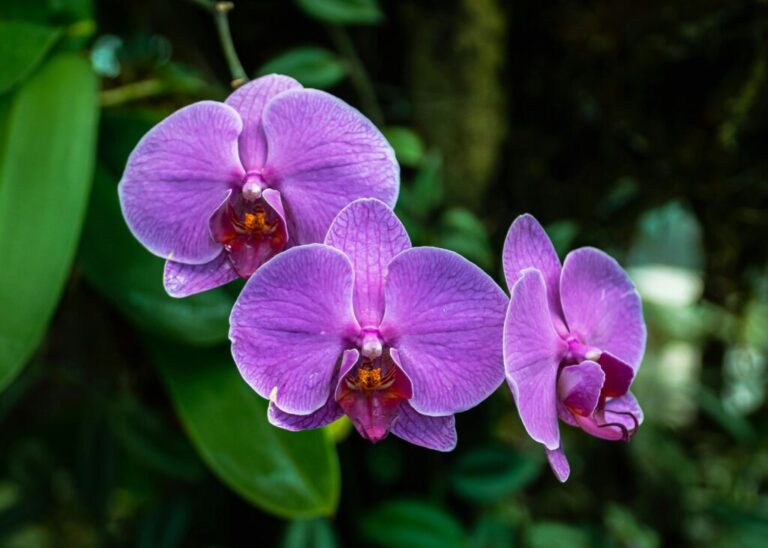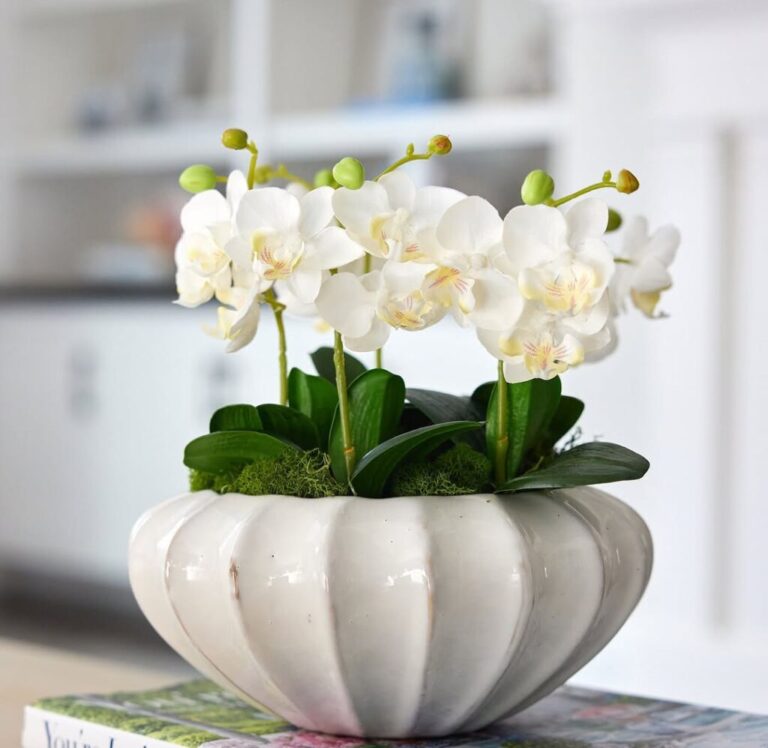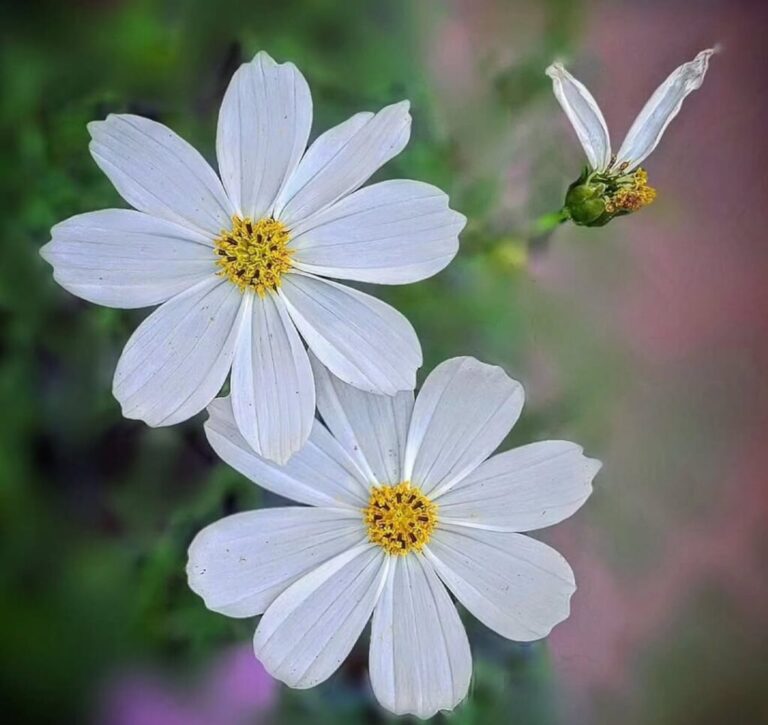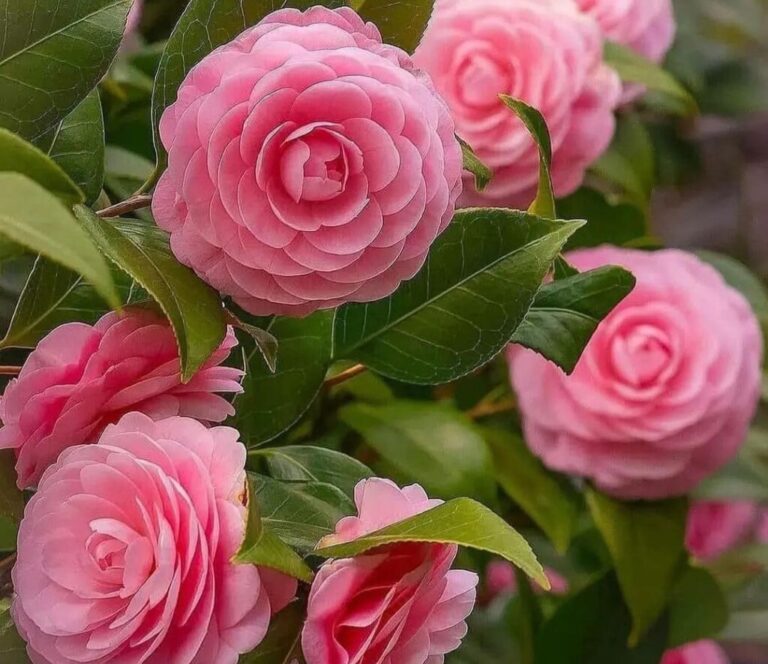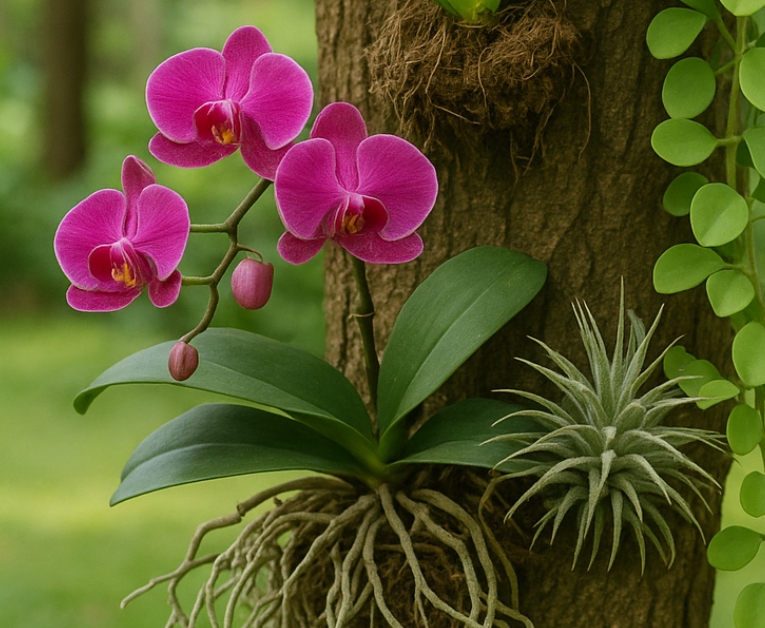Miltonia orchids, often called the “pansy orchids,” are known for their stunning, fragrant flowers and elegant cascading growth. They are an excellent choice for hanging baskets, allowing their arching flower spikes and lush foliage to be displayed beautifully. Unlike some other orchids, Miltonia species thrive in intermediate conditions, making them ideal for home growers.
These orchids prefer bright, indirect light, moderate temperatures, and high humidity, which helps them produce abundant flowers. In this guide, we’ll explore the top 10 Miltonia orchid varieties, , that are perfect for hanging baskets, along with essential care tips to keep them thriving and looking their best year-round.
- 1 Miltonia Orchid
- 2 1. Miltonia clowesii
- 3 2. Miltonia spectabilis
- 4 3. Miltonia moreliana
- 5 4. Miltonia regnellii
- 6 5. Miltonia flavescens
- 7 6 .Miltonia x bluntii
- 8 7 .Miltonia candida
- 9 8. Miltonia warszewiczii
- 10 Humidity: 60-80% for optimal growth.
- 11 9. Miltonia phymatochila
- 12 10 Miltonia Sunset (Hybrid)
- 13 Miltonia Orchids: Step-by-Step Guide to Growing in Baskets
- 14 Step 1: Choose the Right Basket
- 15 Step 2: Prepare the Growing Medium
- 16 Step 3: Soak the Roots Before Planting
- 17 Step 4: Position the Orchid in the Basket
- 18 Step 5: Fill the Basket with Potting Medium
- 19 Step 7: Maintain Optimal Temperature & Humidity
- 20 Step 8: Watering & Moisture Control
- 21 Step 9: Fertilizing Routine
- 22 Step 10: Repotting & Basket Maintenance
- 23 Care Tips for Hanging Miltonia Orchids
- 24 Miltonia Orchids Care: FAQs
Miltonia Orchid
| Care Aspect | Details |
|---|---|
| Botanical Name | Miltonia & Miltoniopsis (Pansy Orchids) |
| Common Name | Pansy Orchid |
| Plant Type | Epiphytic Orchid |
| Light Requirement | Bright, indirect light (East/West window) |
| Temperature | Day: 65–75°F (18–24°C), Night: 55–60°F (13–16°C) |
| Humidity | 50–70% (Use a humidity tray or humidifier if needed) |
| Watering Frequency | 2–3 times per week in summer, once a week in winter |
| Potting Medium | Sphagnum moss + fine bark + charcoal + perlite |
| Fertilization | Every 2 weeks with ¼ strength orchid fertilizer (20-20-20) |
| Repotting | Every 2–3 years or when medium breaks down |
| Blooming Season | Spring & Fall (varies by species) |
| Fragrance | Yes, some varieties are fragrant |
| Pruning | Trim dead flower spikes after blooming |
| Common Issues | Root rot (due to overwatering), leaf spotting (fungal issues), wrinkled leaves (low humidity) |

1. Miltonia clowesii
Miltonia clowesii is a stunning variety with yellow-brown petals covered in intricate red markings. Its long, arching flower spikes make it a perfect candidate for hanging baskets, where the blooms can cascade naturally. The flowers are fragrant and long-lasting, often blooming multiple times a year under the right conditions. This orchid requires a humid environment to flourish, so misting or using a humidity tray is beneficial. With its resilience and unique coloration, M .clowesii is an excellent addition to any hanging orchid collection.
Light: Bright, indirect sunlight.
Watering: Keep evenly moist but avoid soggy roots.
Humidity: 50-70% for best results.
2. Miltonia spectabilis

This orchid is easily recognizable due to its large, flat, purple flowers with a distinctive lip. It grows outward, making it an excellent choice for hanging displays. The plant produces multiple spikes per season, ensuring a prolonged flowering period. M. spectabilis prefers cooler temperatures and well-ventilated areas to prevent root rot. It adapts well to various growing conditions but thrives best when provided with a well-draining medium and consistent moisture levels, making it a rewarding orchid for both beginners and experienced growers.
Light: Medium to bright indirect light.
Watering: Regular watering, allowing for slight drying between cycles.
Temperature: Prefers cooler, intermediate temperatures.
3. Miltonia moreliana

With its deep purple flowers and strong fragrance, M. moreliana is a favorite among orchid enthusiasts. It has a compact growth habit, making it suitable for small hanging baskets. The blooms last several weeks and appear in clusters, creating a breathtaking display. This variety benefits from slightly warmer temperatures and consistent watering to prevent dehydration. Providing proper air circulation helps reduce the risk of fungal infections. Due to its manageable size and stunning floral display, Miltonia moreliana is a great option for indoor hanging orchid setups.
Light: Indirect light with some morning sun.
Watering: Maintain moderate moisture.
Humidity: At least 60%.

4. Miltonia regnellii
This species produces soft pink flowers with a sweet scent. The blossoms appear on arching spikes, making them ideal for hanging basket cultivation. M .regnellii is a relatively low-maintenance orchid that rewards growers with its charming, delicate flowers. It prefers consistent moisture levels, so avoid letting the potting mix dry out completely. This variety does well in bright, indirect light but should be protected from intense afternoon sun. Proper humidity levels enhance its blooming potential, making it a delightful addition to any orchid collection.
Light: Medium to bright indirect light.
Watering: Moist but not soggy medium.
Airflow: Requires good circulation.
5. Miltonia flavescens

Known for its yellow, star-shaped flowers, Miltonia flavescens has a slightly drier tolerance than other Miltonia varieties. Its trailing growth is well-suited for baskets. The plant produces multiple flower spikes with dozens of small, delicate blooms that emit a pleasant fragrance. This variety prefers good drainage, so using a mix of bark and sphagnum moss can help prevent root rot. Its vibrant yellow flowers create a striking contrast against its lush green foliage, making it a beautiful hanging basket specimen that adds a touch of elegance to any setting.
Light: Bright, indirect sunlight.
Watering: Moderate with good drainage.
Temperature: Intermediate to warm.
6 .Miltonia x bluntii

is a striking hybrid known for its large, star-shaped flowers with a blend of soft pink and white petals accented by a deep magenta lip. The blooms emit a light, pleasant fragrance, making them a favorite among collectors. This orchid thrives in intermediate conditions and benefits from good air circulation to prevent fungal issues. Its ability to bloom multiple times a year makes it a rewarding choice for growers who appreciate continuous floral displays. Providing consistent moisture and avoiding temperature extremes will ensure healthy growth.
Light: Bright, indirect sunlight.
Watering: Keep evenly moist but allow slight drying between watering.
Humidity: 50-70% for best results.
7 .Miltonia candida

features delicate white flowers with contrasting dark purple or maroon lips, creating a visually stunning display. The petals often have a slight ruffled edge, adding to their charm. This species prefers cooler to intermediate temperatures and requires regular misting or a humidity tray to maintain optimal growing conditions. Its fragrant blooms appear in late spring to early summer, rewarding growers with an elegant floral show. Proper ventilation helps prevent common issues like leaf spotting and rot.
Light: Morning sun and bright, indirect light.
Watering: Maintain even moisture but avoid overwatering.
Humidity: 55-75% for best results.
8. Miltonia warszewiczii
stands out with its large, showy flowers adorned with white petals and a deep magenta lip with intricate veining. This orchid has a slight citrus-like fragrance and blooms in clusters, creating a dramatic effect. It thrives in warm to intermediate temperatures and appreciates consistent moisture to prevent pseudobulb shriveling. Due to its sensitivity to extreme dryness, regular misting or a humidifier can be beneficial. Its long-lasting blooms and unique color combination make it a prized addition to any collection.
Light: Bright, indirect sunlight with some shade in the afternoon.
Watering: Keep evenly moist, allowing slight drying between watering.
Humidity: 60-80% for optimal growth.
9. Miltonia phymatochila

is a rare and distinctive species, recognized for its creamy white flowers with subtle greenish hues and a large, wavy lip. The blooms are long-lasting and have a mild, sweet fragrance. This orchid thrives in intermediate conditions with high humidity and prefers a well-draining medium to prevent root rot. It requires careful monitoring of moisture levels, as overwatering can quickly lead to fungal issues. Its unusual flower shape and elegance make it a sought-after species among Miltonia enthusiasts.
Light: Morning sun and bright, indirect light.
Watering: Maintain moderate moisture, allowing slight drying between watering.
Humidity: 60-75% for best results.
10 Miltonia Sunset (Hybrid)

is a breathtaking hybrid celebrated for its warm-toned blooms that range from golden yellow to soft peach, often with a deep red or burgundy lip. The flowers have a light, pleasant fragrance and appear in clusters, creating a spectacular display. This hybrid is relatively easy to grow, tolerating a wider range of temperatures than some Miltonia species. It benefits from consistent moisture and good airflow to prevent fungal issues. With its vibrant colors and ease of care, Miltonia Sunset is a fantastic choice for both beginners and experienced growers.
Light: Bright, indirect sunlight with dappled shade.
Watering: Keep evenly moist but ensure proper drainage.
Humidity: 50-70% for best results.
Miltonia Orchids: Step-by-Step Guide to Growing in Baskets
Step 1: Choose the Right Basket
Material: Use wooden slat baskets (such as teak or cedar) or wire baskets lined with coconut fiber or sphagnum moss.
Size: Pick a basket slightly larger than the root system to allow future growth.
Drainage: Ensure the basket has plenty of air gaps to prevent waterlogging.
Tip: If using a wire basket, line it with coconut husk or sphagnum moss to retain some moisture.
Step 2: Prepare the Growing Medium
Miltonia orchids need a well-draining, moisture-retentive mix. Use:
50% sphagnum moss (for moisture retention)
30% medium bark chips (for aeration)
10% charcoal (to prevent acidity)
10% perlite (for drainage)
Alternative Mix: A mix of fine-grade orchid bark and sphagnum moss works well.
Step 3: Soak the Roots Before Planting
If transferring a Miltonia from a pot, soak the roots in room-temperature water for 15–20 minutes to soften them.
Trim any dead, rotting, or mushy roots with sterile scissors.
Tip: Avoid removing healthy roots, as Miltonias are sensitive to transplanting.
Step 4: Position the Orchid in the Basket
Place a thin layer of sphagnum moss at the base.
Position the orchid with its oldest growth near the edge (to allow new growth to spread).
Gently spread the roots over the moss layer.
Step 5: Fill the Basket with Potting Medium
Add the prepared orchid mix around the roots, ensuring the plant is firmly secured but not buried too deep.
Press lightly to stabilize the orchid while keeping the roots free to breathe.
Step 6: Provide Proper Lighting
Miltonia orchids need bright, indirect light (similar to Phalaenopsis orchids).
Ideal placement: East or west-facing window, or filtered sunlight in an outdoor setting.
Avoid direct afternoon sun to prevent leaf burns.
Tip: If leaves turn reddish or yellow, reduce light exposure. If they turn dark green, increase light.
Step 7: Maintain Optimal Temperature & Humidity
Temperature:
Day: 65–75°F (18–24°C)
Night: 55–60°F (13–16°C)
Humidity:
Keep at 50–70% using a humidity tray or room humidifier.
Tip: Good air circulation is key—use a fan if growing indoors.
Step 8: Watering & Moisture Control
Water 2–3 times per week during warm months and once a week in winter.
How to water:
Drench the basket until water runs out.
Allow the top layer to dry slightly before the next watering.
Avoid waterlogging—Miltonias hate soggy roots!
Tip: Use rainwater or distilled water if your tap water is high in minerals.
Step 9: Fertilizing Routine
Frequency: Every 2 weeks during active growth.
Type: Use a balanced orchid fertilizer (20-20-20) at ¼ strength.
Method: Dilute and apply during watering.
Tip: Once a month, flush the basket with plain water to remove salt buildup.
Step 10: Repotting & Basket Maintenance
Repot every 2–3 years Every two to three years or when the medium degrades, repotte.
Trim old flower spikes after blooming to encourage new growth.
If roots start growing out too much, attach them to a larger basket instead of cutting them.
Growing Miltonia orchids in baskets mimics their natural epiphytic environment, promoting healthier roots and stunning blooms. With proper care, they will reward you with vibrant, fragrant flowers season after season!
Care Tips for Hanging Miltonia Orchids
Miltonia orchids require specific care to thrive in hanging baskets. Follow these tips to ensure vibrant blooms and healthy growth:
✅ Choose a Well-Draining Medium – A mix of orchid bark, sphagnum moss, and perlite works best to prevent root rot and promote aeration.
✅ Water Properly – These orchids need frequent watering, but avoid soggy conditions. Let the medium dry slightly between waterings to maintain healthy roots.
✅ Provide High Humidity – Aim for 50-70% humidity levels. If needed, place a humidity tray nearby or mist the leaves occasionally.
✅ Ensure Good Air Circulation – Hanging baskets allow airflow around the roots, reducing the risk of fungal infections and improving overall plant health.
✅ Use Balanced Fertilizer – Feed with a diluted orchid fertilizer every two weeks during the growing season to promote healthy growth and flowering.
✅ Maintain Proper Light Conditions – Bright, indirect sunlight is best. Avoid direct midday sun, as it can scorch the leaves and weaken the plant.
✅ Repot When Necessary – Repot every 2-3 years or when the medium breaks down. This prevents compaction and ensures the orchid continues to receive adequate nutrients and oxygen.
Miltonia orchids are a fantastic choice for hanging baskets, offering vibrant colors, enchanting fragrances, and graceful cascading growth. By selecting the right varieties and providing proper care, you can enjoy a beautiful, long-lasting display of Miltonia orchids, including Miltonia in your home or garden. These orchids not only bring elegance to any space but also reward growers with continuous, breathtaking blooms throughout the year. Whether you’re a seasoned grower or a beginner, Miltonia orchids will add charm and sophistication to your collection.
Miltonia Orchids Care: FAQs
How often should I water Miltonia orchids?
Miltonia orchids prefer consistent moisture but should not sit in waterlogged soil, as their roots are prone to rot. During warm months, water them every 3–4 days, ensuring that the potting medium remains damp but not soaking. In cooler months, reduce watering to once a week to prevent excessive moisture buildup. Always use room-temperature water and avoid watering in the late evening to prevent fungal issues. If you’re unsure, check the potting medium—if it feels slightly dry on the surface, it’s time to water.
What is the best potting mix for Miltonia orchids?
A well-draining, moisture-retentive mix is key to keeping Miltonia orchids healthy. A combination of fine orchid bark, sphagnum moss, and perlite works well, allowing the roots to breathe while maintaining adequate moisture. Avoid using standard potting soil, as it retains too much water and can cause root rot. Repotting every 2–3 years is recommended to refresh the mix and prevent compaction, which can lead to poor aeration and unhealthy roots
Do Miltonia orchids need high humidity?
Yes, Miltonia orchids thrive in 50–70% humidity, mimicking their natural rainforest environment. If the air in your home is dry, especially in winter, consider using a humidity tray filled with water and pebbles beneath the orchid pot. Misting the leaves lightly once or twice a day can also help, but avoid excessive moisture on the leaves to prevent fungal infections. If your home’s humidity levels drop below 40%, using a humidifier near your orchids is a great way to maintain the ideal environment.
How much light do Miltonia orchids need?
Miltonia orchids require bright, indirect light for optimal growth. An east-facing or north-facing window is ideal, as it provides gentle morning light without harsh midday sun. Too much direct sunlight can scorch their delicate leaves, causing yellowing or brown spots. If growing indoors, you can supplement with grow lights (set for 12–14 hours a day) to ensure they receive enough light. A good rule of thumb: If the leaves are dark green, the plant needs more light; if they turn yellowish, it’s receiving too much
What temperature is best for Miltonia orchids?
Miltonia orchids prefer moderate, stable temperatures:
Daytime: 65–75°F (18–24°C)
Nighttime: 55–60°F (13–16°C)
They dislike extreme heat or cold. Sudden temperature drops below 50°F (10°C) or prolonged exposure to temperatures above 80°F (27°C) can stress the plant and prevent blooming. If growing indoors, keep your orchids away from drafty windows, air conditioning vents, or heaters, as rapid temperature fluctuations can weaken them.
How do I fertilize Miltonia orchids?
Fertilizing is essential for strong growth and abundant blooms. Use a balanced orchid fertilizer (such as 20-20-20 or 10-10-10) diluted to half strength, applying it every two weeks during the active growing season (spring to early fall). During winter, reduce fertilizing to once a month, as the plant’s growth slows. If you want to encourage blooming, switch to a high-phosphorus fertilizer (like 10-30-20) before the blooming period. To avoid root burn, always hydrate the orchid before fertilising it.
How do I repot a Miltonia orchid?
Miltonia orchids should be repotted every 2–3 years or when the potting medium starts breaking down. If you notice roots growing out of the pot or water draining too slowly, it’s time to repot. Choose a slightly larger pot with good drainage and gently remove the orchid from its old container. Trim any dead or rotting roots before placing it in fresh orchid bark mix. Water lightly after repotting and keep the plant in a shaded spot for a few days to reduce transplant shock.
Are Miltonia orchids fragrant?
Yes! Many Miltonia orchids produce a sweet, floral fragrance, especially in the morning. The intensity and scent vary depending on the variety, with some having a delicate, fresh aroma while others emit a stronger, perfume-like scent. If you love fragrant orchids, look for varieties like Miltonia moreliana or Miltonia clowesii, known for their rich, pleasant fragrance.


